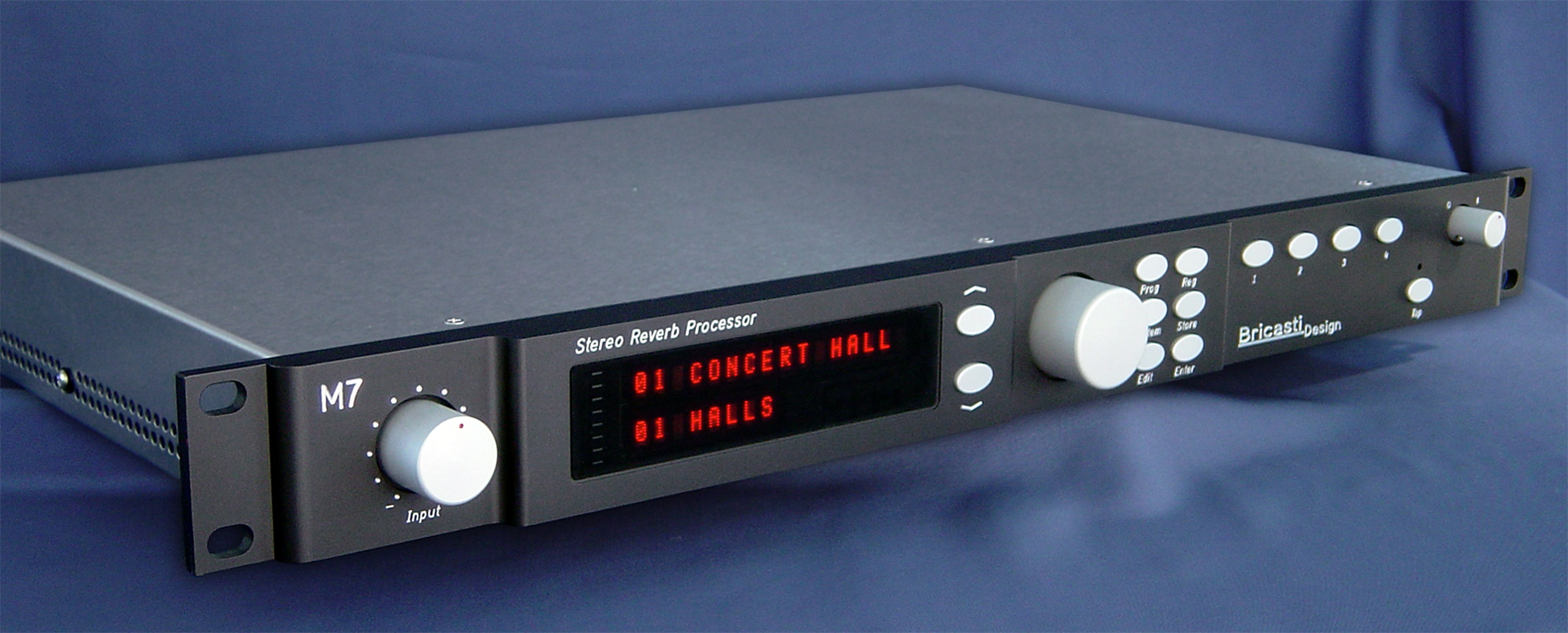Reverb
Reverberation, in psychoacoustics and acoustics, is the persistence of sound after a sound is produced. A reverberation, or reverb, is created when a sound or signal is reflected causing a large number of reflections to build up and then decay as the sound is absorbed by the surfaces of objects in the space – which could include furniture, people, and air.
- Read more about Reverb
- Log in or register to post comments
Plate Reverb
A plate reverb system uses an electromechanical transducer, similar to the driver in a loudspeaker, to create vibrations in a large plate of sheet metal. The plate’s motion is picked up by one or more contact microphones whose output is an audio signal which may be added to the original "dry" signal.
- Read more about Plate Reverb
- Log in or register to post comments
Spring Reverb
A spring reverb system uses a transducer at one end of a spring and a pickup at the other, similar to those used in plate reverbs, to create and capture vibrations within a metal spring. Laurens Hammond was granted a patent on a spring-based mechanical reverberation system in 1939.
- Read more about Spring Reverb
- Log in or register to post comments
Convolution reverb
Convolution reverb is a process used for digitally simulating reverberation. It uses the mathematical convolution operation, a pre-recorded audio sample of the impulse response of the space being modeled, and the sound to be echoed, to produce the effect. The impulse-response recording is first stored in a digital signal-processing system.
- Read more about Convolution reverb
- Log in or register to post comments
Bricasti NEWS
The M7 upgrade will be a for cost hardware upgrade.
We are developing two new products. One will be a lower cost product that we are calling the M200, while the other will be our flagship M7 upgrade.
- Read more about Bricasti NEWS
- 1 comment
- Log in or register to post comments
PreSonus Offers Convology Vintage Reverbs Library for Studio One
audiokid submitted a new resource:
PreSonus Offers Convology Vintage Reverbs Library for Studio One
Convology Vintage Reverb bundle for Studio One.
Baton Rouge, Louisiana—July 2016… PreSonus® has released the Convology Vintage Reverbs Add-ons library for Studio One® 3, the latest in a series of Add-on products that enhance PreSonus’ popular DAW.
Reverb EQ Settings
- Read more about Reverb EQ Settings
- 21 comments
- Log in or register to post comments
Help me dissect this reverb
As some know, I've recently been paying more attention to reverb lately; both the types and the amounts in mixes.
- Read more about Help me dissect this reverb
- 8 comments
- Log in or register to post comments
Need input on room simulation
Hi all..
I'm doing a rocker for this next song on the album I'm engineering...
This is definitely not a "clean / studio" sound I'm after here. I'm looking for a sort of "trashy" vibe to it, particularly on drums, but... I'd rather use just one reverb on everything to emulate the vibe of a band playing all at once in the same space.
- Read more about Need input on room simulation
- 29 comments
- Log in or register to post comments
